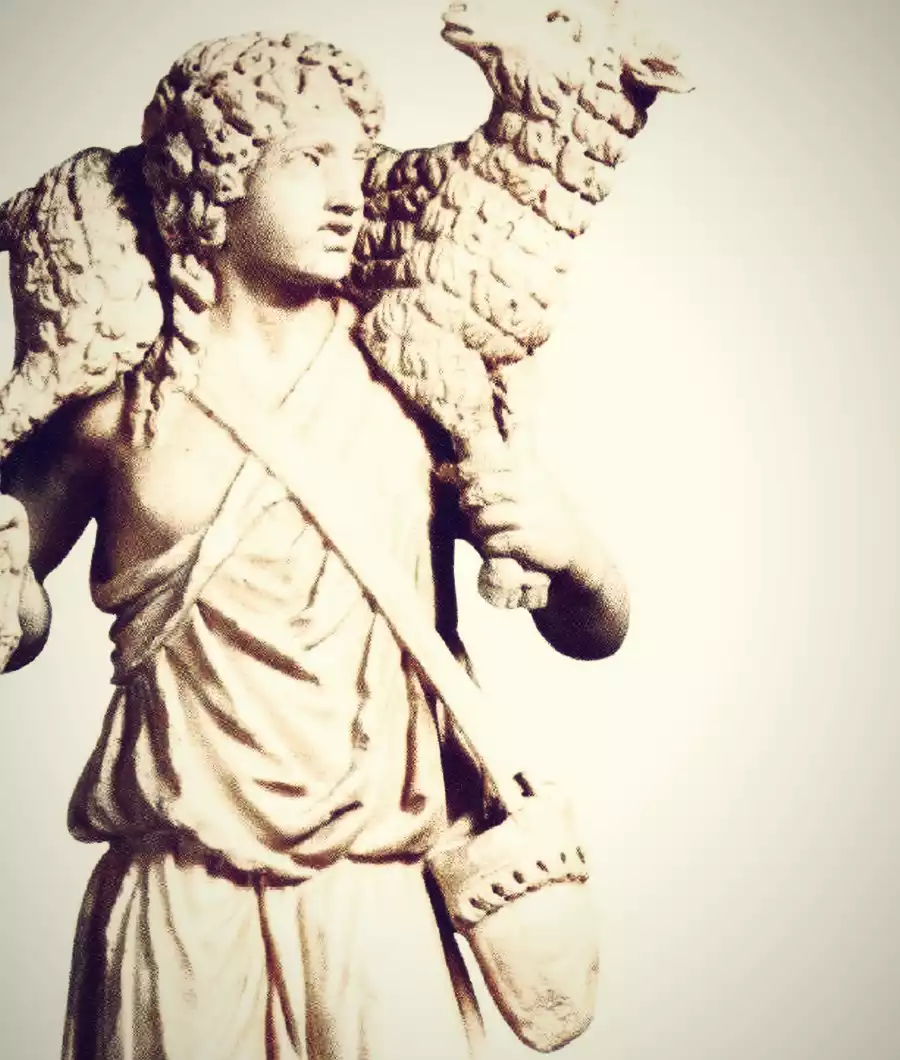
Tracing back to the second millennium BCE, the Middle East emerged as the cradle of monotheistic religions. The Pharaoh Akhenaten’s establishment of Amarna marked a significant shift towards the worship of a singular deity. This pivotal moment laid the groundwork for the Abrahamic faiths, intertwining Judaic and Graeco-Roman Christian Art with its spiritual narrative.
Judaic Influence and the Aniconic Tradition
In the tapestry of Christian art’s evolution, the threads of Judaic tradition weave a complex narrative. Central to this narrative is the staunch resistance to idolatry, a cornerstone of Jewish faith as dictated in the commandments to Moses. This aniconic stance, emphasizing the absence of figural representations, starkly contrasts with the surrounding cultures’ artistic norms, yet it lays a foundational ethos that subtly permeates early Christian art.
The destruction of the Second Temple in Jerusalem by Roman General Titus marked a significant epoch, not only in Jewish history but also in the cultural expression of the time. Post-destruction, Jewish sacred art, primarily aniconic, began to subtly integrate motifs from its Graeco-Roman milieu. This integration was not a mere blending of aesthetics but a nuanced dialogue between maintaining a distinct religious identity and engaging with the broader cultural currents of the Diaspora.
The synagogues from this era, especially notable in regions like Palestine, became vessels for this artistic conversation. Here, the aniconic tradition met with a gradual incorporation of plant, animal, and even human figures. Noteworthy is the mosaic floor of the synagogue at Hammat Tiberias. This intricate artwork harmoniously presents Judaic symbols such as the Menorah and the shofar alongside zodiac signs encircling a representation of Helios. This mosaic is not just a floor; it’s a testament to the evolving Judaic artistic expression, acknowledging its roots while conversing with the surrounding cultural lexicon.
As the ‘Judaic and Graeco-Roman Roots of Christian Art’ come to light, it’s apparent that these roots are not just intertwined; they are interdependent. The aniconic tradition, while maintaining its core values, adapts and evolves, echoing the broader narrative of religious and cultural interchange. This evolving artistic dialogue paves the way for the subsequent chapters of Christian art, hinting at a rich interplay of symbolism, tradition, and innovation yet to unfold.
Graeco-Roman Contributions to Christian Iconography
As the early Christian art narrative unfolds, the profound influence of Graeco-Roman culture becomes increasingly evident. In this era of artistic and religious cross-pollination, the vibrant, diverse traditions of the Roman Empire provided a rich visual vocabulary that early Christians adeptly adapted to articulate their emerging faith. This chapter delves into how the intricate motifs and ornamental repertoires of Graeco-Roman art found new life and meaning in the Christian context, contributing significantly to the ‘Judaic and Graeco-Roman Roots of Christian Art.
In the bustling cultural melting pot of third-century Dura Europos, a fascinating fusion of artistic expressions coexisted. Here, temples dedicated to Roman deities, local gods, Jewish synagogues, and Christian churches all shared a common aesthetic language. The synagogue’s walls, adorned with biblical scenes, mirrored the ornamental style prevalent throughout the empire. This shared visual culture underscores the fluidity of artistic boundaries and the permeability of religious and cultural identities.
The imagery found in places like the synagogue at Hamman Lif (Naro) further exemplifies this syncretism. The mosaics, with their intricate vinescrolls, diverse fauna, and symbolic motifs, blur the lines between the sacred and the profane. Iconographies such as the cantharus, flanked by peacocks and symbolizing the fountain of life, resonate with Christian symbolism while maintaining a distinctly Graeco-Roman aesthetic.
In this environment of artistic amalgamation, the iconographies that were once purely pagan began to be suffused with Christian significance. The Good Shepherd motif, an antique Roman pastoral image, was re-envisioned to represent Christ. The sunburst or nimbus, framing the heads of deities and heroes alike, became a hallmark of Christian iconography, symbolizing divinity and sanctity. This adaptation process was nuanced and multifaceted, often serving as a subtle yet powerful means of expressing Christian devotion in an era fraught with religious tension and persecution.
Through the lens of ‘Judaic and Graeco-Roman Roots of Christian Art’, it’s evident that the early Christian visual language was not born in isolation. Instead, it emerged from a rich dialogue with the surrounding cultures, drawing from and reinterpreting the extensive repertoire of Graeco-Roman imagery. This chapter not only illuminates the artistic interplay of the time but also sets the stage for the continued evolution of Christian art, a narrative rich with cultural exchange, adaptation, and innovation.
The exploration of ‘Judaic and Graeco-Roman Roots of Christian Art’ reveals a rich mosaic of cultural and religious interplay. Early Christian iconography, born from the confluence of Judaic principles and Graeco-Roman aesthetics, showcases a profound narrative of adaptation, synthesis, and spiritual expression. This journey through art and history underscores the intricate dialogue between faiths and cultures, illuminating the timeless nature of artistic evolution and religious identity.
References
- Ackerman, J. S. (1981). Art and Archaeology of Antiquity. Princeton University Press.
- Elsner, J. (1998). Imperial Rome and Christian Triumph. Oxford University Press.
- Fine, S. (2005). “Archaeologies and Agendas: Reflections on Late Ancient Jewish Art and Early Christian Art.” Journal of Roman Studies. Cambridge University Press (Date of Access: 2024-02-05).
- Goldman, B. (1961). “The Question of a Judaic Aesthetic in Ancient Synagogue Art.” The Journal of Aesthetics and Art Criticism. Vol. 19, No. 3, pp. 295-304. Wiley (Date of Access: 2024-02-05).
- Spivey, N. (2001). Understanding Greek Sculpture: Ancient Meanings, Modern Readings. Thames & Hudson.
